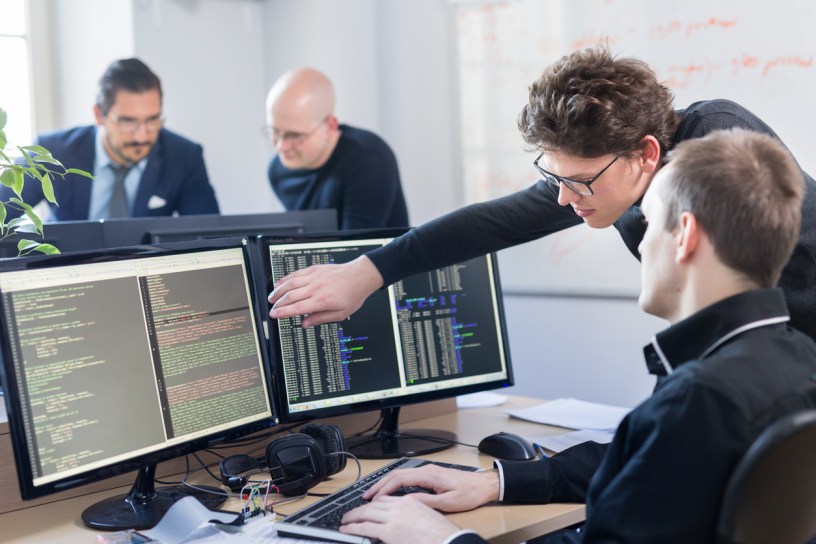Introduction:
In the ever-evolving landscape of technology, artificial intelligence (AI) has emerged as a catalytic force, transforming industries and redefining the boundaries of innovation. Nowhere is this transformation more evident than in the realm of software development. As we step into 2023, it’s crucial to explore how AI-driven software is revolutionizing the way we conceptualize, create, and interact with digital solutions.
- Smart Automation: Streamlining Development ProcessesAI is spearheading a paradigm shift in software development by introducing smart automation. Developers are leveraging machine learning algorithms to automate repetitive and time-consuming tasks, freeing up creative bandwidth for more complex problem-solving. This not only accelerates development timelines but also enhances overall efficiency.
- Predictive Analysis: Anticipating User NeedsOne of the standout features of AI in software development is its ability to analyze vast datasets and predict user behavior. In 2023, expect AI-driven applications to offer personalized user experiences by anticipating and adapting to individual preferences. This predictive analysis not only enhances user satisfaction but also opens new avenues for user engagement.
- Natural Language Processing (NLP): Bridging Communication GapsNatural Language Processing is transforming the way humans interact with software. In the coming year, we can anticipate more applications that seamlessly understand and respond to natural language queries. This not only simplifies user interfaces but also facilitates greater accessibility, making technology more inclusive.
- Enhanced Security Measures: AI as the Guardian of CodeWith the rising complexity of cyber threats, AI is stepping in as a powerful guardian of digital fortresses. AI algorithms can continuously monitor codebases, identifying vulnerabilities and potential security breaches in real-time. This proactive approach to cybersecurity is becoming integral to safeguarding sensitive data in an increasingly interconnected digital landscape.
- Continuous Integration and Testing: Ensuring Code QualityAI is reshaping the development pipeline by enhancing continuous integration and testing processes. Automated testing, driven by AI algorithms, ensures that new code integrations are thoroughly examined for functionality, performance, and security, reducing the likelihood of bugs making their way into the final product.
- Innovative Problem Solving: AI as a Creative CollaboratorBeyond automation, AI is emerging as a creative collaborator for developers. In 2023, we can anticipate AI-driven tools that assist in brainstorming, prototype development, and even generating code snippets. This innovative problem-solving partnership between human developers and AI is unlocking new possibilities for software creation.
Conclusion:
As we embark on another year of technological advancement, the influence of artificial intelligence on software development is poised to deepen. From smart automation to enhanced security measures and innovative problem-solving, AI is ushering in a new era of efficiency and creativity. The collaboration between human ingenuity and AI-driven capabilities is not just a trend but a fundamental shift in how we conceive and craft the software solutions that power our digital future.

